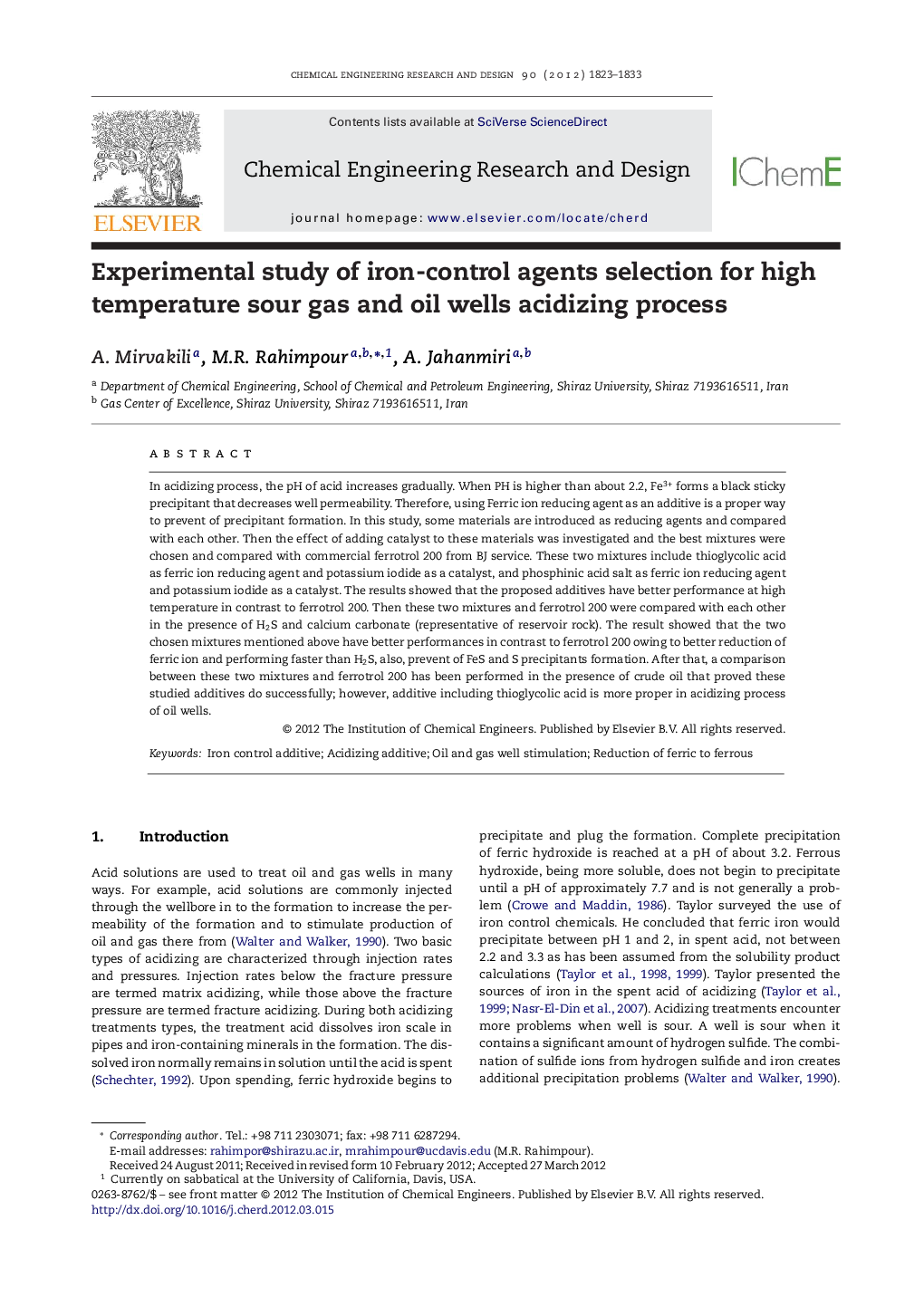| کد مقاله | کد نشریه | سال انتشار | مقاله انگلیسی | نسخه تمام متن |
|---|---|---|---|---|
| 621736 | 882573 | 2012 | 11 صفحه PDF | دانلود رایگان |

In acidizing process, the pH of acid increases gradually. When PH is higher than about 2.2, Fe3+ forms a black sticky precipitant that decreases well permeability. Therefore, using Ferric ion reducing agent as an additive is a proper way to prevent of precipitant formation. In this study, some materials are introduced as reducing agents and compared with each other. Then the effect of adding catalyst to these materials was investigated and the best mixtures were chosen and compared with commercial ferrotrol 200 from BJ service. These two mixtures include thioglycolic acid as ferric ion reducing agent and potassium iodide as a catalyst, and phosphinic acid salt as ferric ion reducing agent and potassium iodide as a catalyst. The results showed that the proposed additives have better performance at high temperature in contrast to ferrotrol 200. Then these two mixtures and ferrotrol 200 were compared with each other in the presence of H2S and calcium carbonate (representative of reservoir rock). The result showed that the two chosen mixtures mentioned above have better performances in contrast to ferrotrol 200 owing to better reduction of ferric ion and performing faster than H2S, also, prevent of FeS and S precipitants formation. After that, a comparison between these two mixtures and ferrotrol 200 has been performed in the presence of crude oil that proved these studied additives do successfully; however, additive including thioglycolic acid is more proper in acidizing process of oil wells.
▸ Novel ferric ion reducers compared with traditional iron control agents. ▸ The best proposed reducing agents are compared with commercial agent. ▸ The performance of novel agent is better than commercial agent at sour gas well conditions. ▸ This novel agent does not propose for oil well stimulation. ▸ Thioglycolic acid is better than other agents for oil well stimulation.
Journal: Chemical Engineering Research and Design - Volume 90, Issue 11, November 2012, Pages 1823–1833